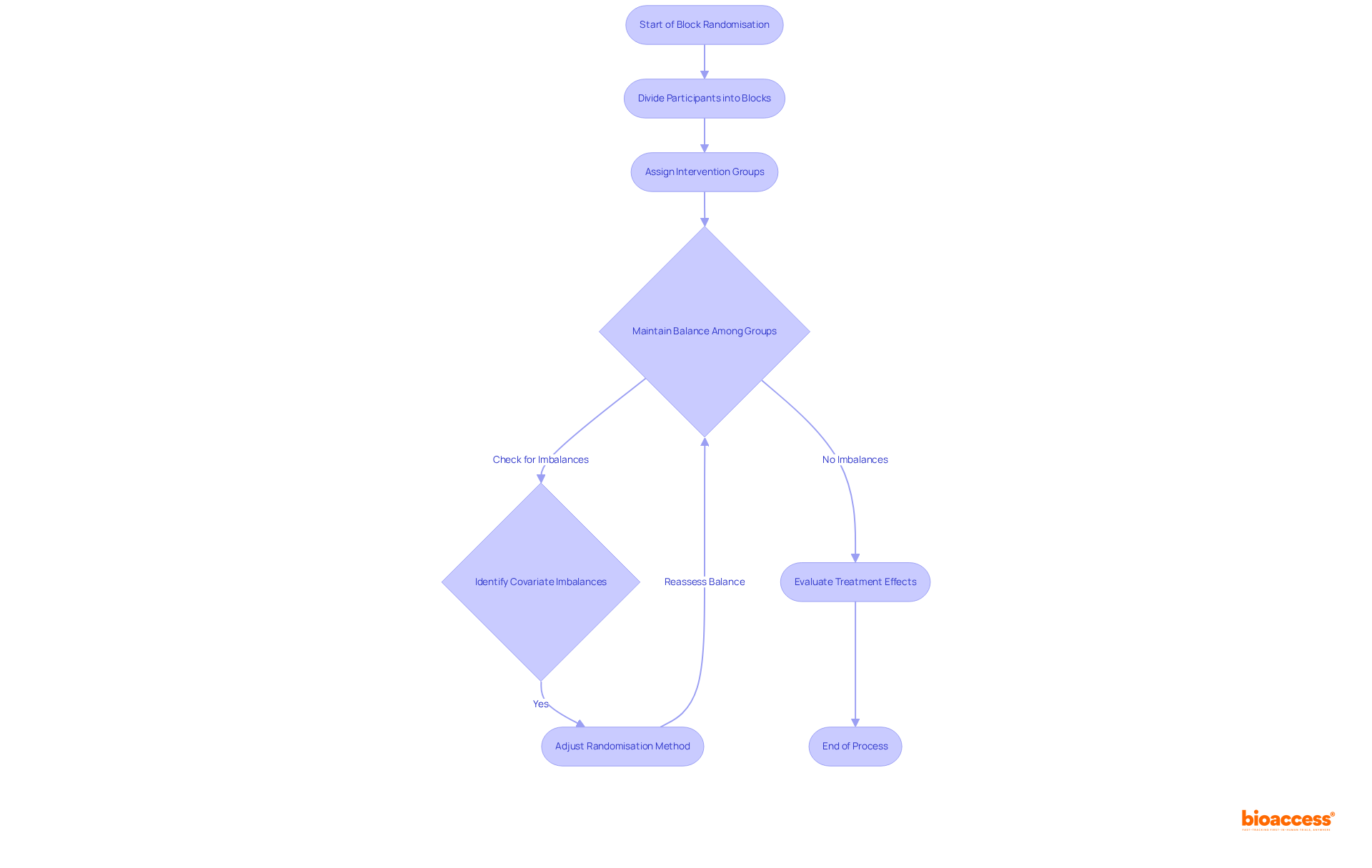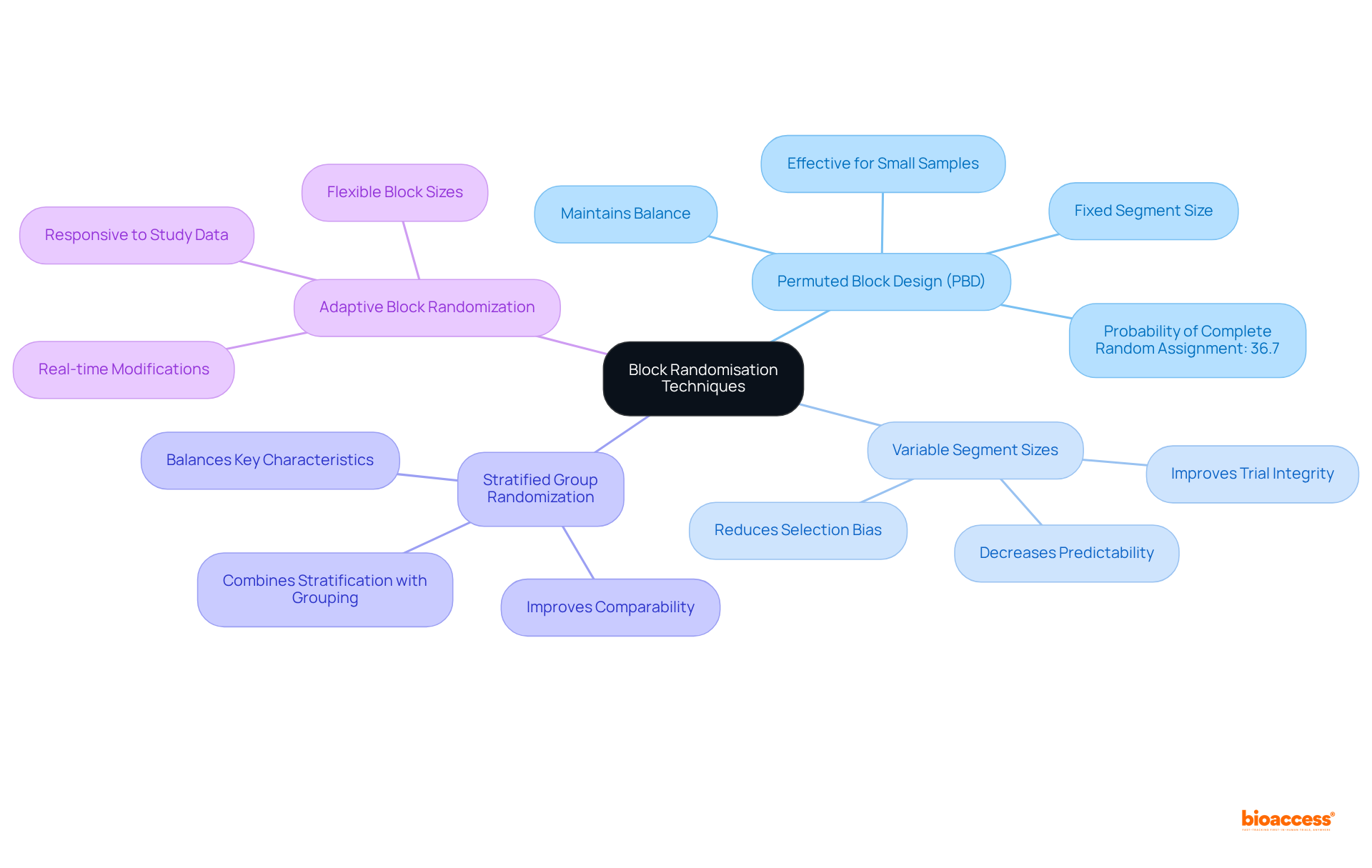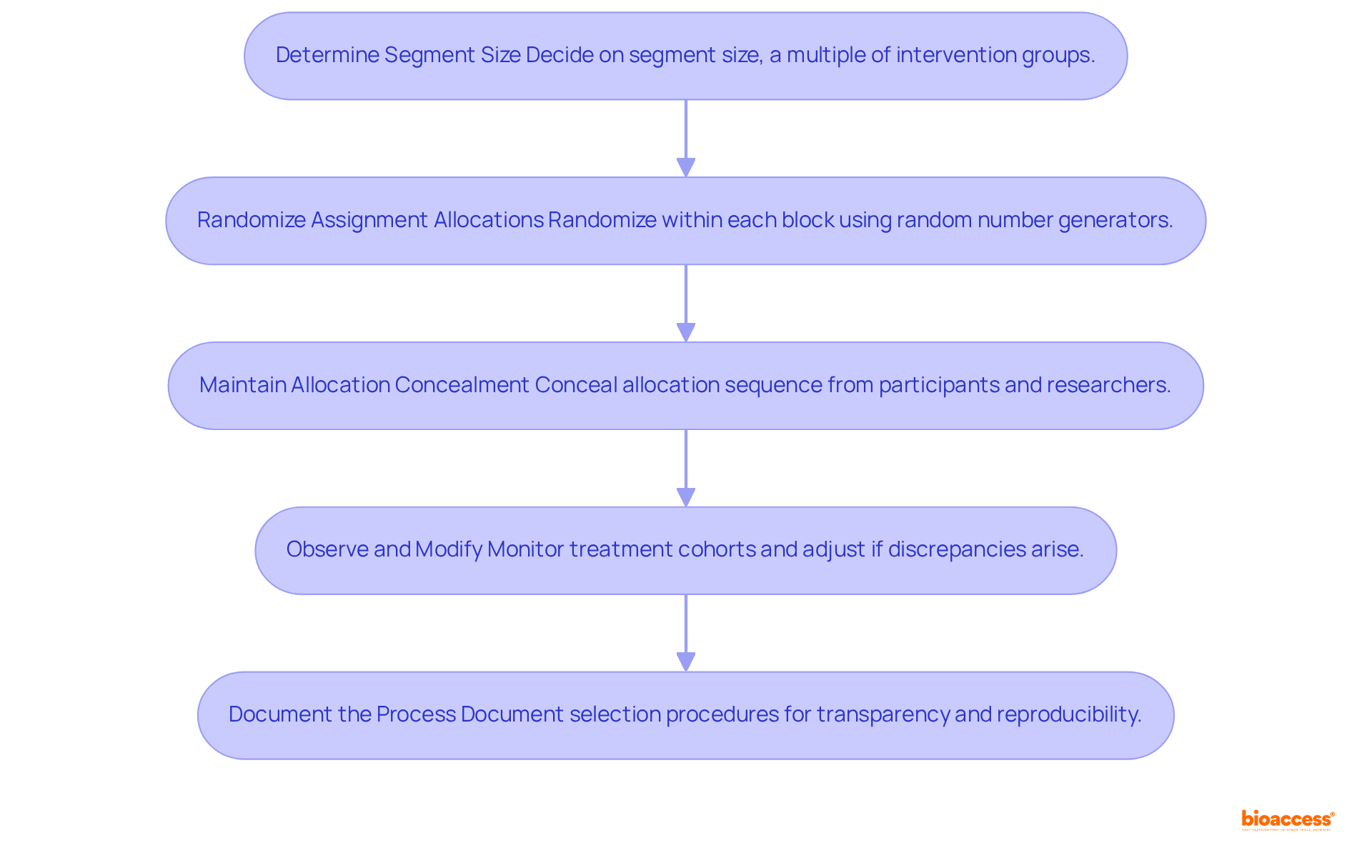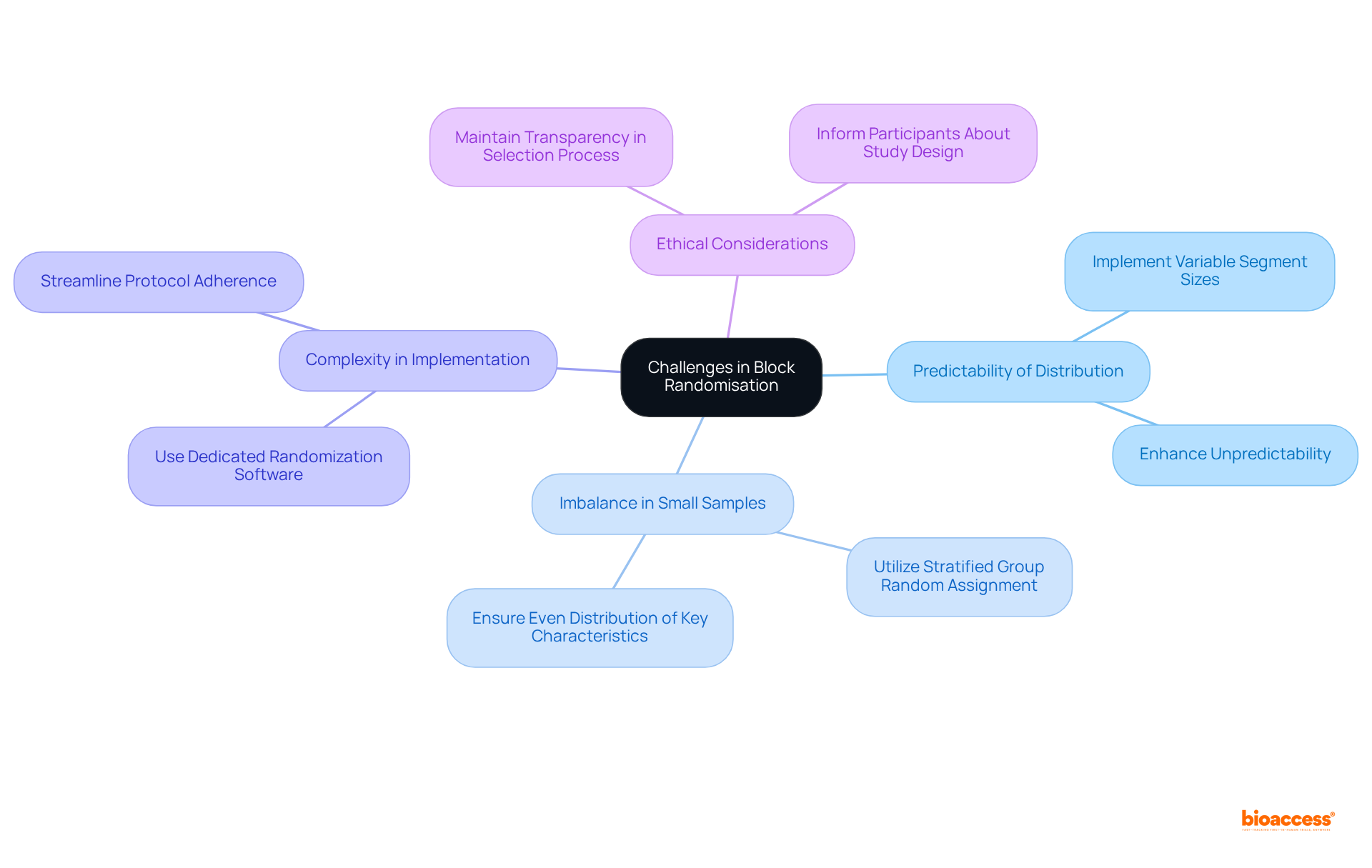


This article delves into the techniques, implementation, and challenges of block randomisation in clinical trials, a critical component for ensuring balanced participant allocation across intervention groups. Effective block randomisation is essential, as it mitigates selection bias and enhances the reliability of study outcomes. Moreover, it addresses significant challenges such as predictability and imbalances in small samples, utilizing various methodologies and best practices to overcome these obstacles. Through a comprehensive understanding of these elements, clinical researchers can significantly improve their study designs and outcomes.
Block randomisation serves as a cornerstone in the realm of clinical trials, playing a pivotal role in the equitable distribution of participants across intervention groups. This technique not only enhances the reliability of findings but also mitigates the risk of biases that could skew results.
However, challenges abound—ranging from predictability in participant allocation to ethical considerations in trial design. How can researchers navigate these complexities to ensure both the integrity of their studies and the ethical treatment of participants?
This article delves into the intricacies of block randomisation, exploring its techniques, implementation strategies, and the hurdles that must be overcome for successful application in clinical research.
Block randomisation is a crucial technique in clinical trials, effectively assigning participants into intervention groups while ensuring balance among these groups. This method involves dividing participants into smaller groups, each comprising a specific number of individuals designated for different intervention categories. The significance of grouping allocation through block randomisation lies in its ability to mitigate selection bias, which is vital for confirming that the observed treatment effects are genuinely attributable to the intervention rather than confounding factors. By maintaining uniform group sizes throughout the experiment, researchers can enhance the statistical power of their results.
Investigations indicate that appropriate random assignment can substantially reduce the likelihood of imbalances; for example, the probability of imbalance decreases to 15.7% with a sample size of 200 subjects, compared to 52.7% with only 40 subjects. Furthermore, grouping participants not only facilitates achieving equilibrium in sample sizes but also addresses potential covariate imbalances, thereby bolstering the reliability of study outcomes.
Case studies have shown that experiments utilizing stratified allocation effectively diminish the risk of overestimating treatment effects, which can occur by as much as 40% in poorly allocated studies. Overall, block randomisation in the process of group allocation is an integral component of robust clinical study design, enhancing the dependability and authenticity of clinical evidence within the Medtech sector.

Block randomisation includes several methodologies, each with distinct features that cater to different trial needs.
Permuted Block Design (PBD): This technique randomizes participants within segments of a fixed size, ensuring that groups receiving different interventions remain balanced at predetermined intervals. It is particularly effective in small sample sizes, where block randomisation is crucial for maintaining balance and ensuring statistical validity. Notably, the probability of complete random assignment for the PBD is 36.7% when the Maximal Tolerated Imbalance (MTI) is 3, highlighting its effectiveness in achieving balance.
Variable Segment Sizes: By utilizing segments of different sizes, this method decreases predictability in resource allocation. This variability aids in reducing selection bias, which can occur when group sizes are known, thereby improving the integrity of the trial with block randomisation.
Stratified Group Randomization: This method combines stratification with grouping at intervals, ensuring that participants are balanced not only by intervention but also by key baseline characteristics, such as age or gender. This dual focus improves the comparability of treatment groups, facilitated by block randomisation.
Adaptive Block Randomization: This flexible approach permits modifications in block sizes according to real-time study data, enhancing the responsiveness of the randomization process. Such adaptability can be especially advantageous in dynamic testing environments that employ block randomisation.
As Roger J. Lewis, MD, PhD, notes, "Randomization helps to ensure that a certain proportion of patients receive each treatment and that the treatment groups being compared are similar in both measured and unmeasured patient characteristics." Each of these methodologies presents unique advantages and challenges, making it essential to select the appropriate technique based on the specific objectives and constraints of the clinical trial.

Implementing block randomization involves several key steps:
Determine Segment Size: The first step is to decide on the segment size, which should be a multiple of the number of intervention groups. For instance, if there are two intervention groups, a size of 4 or 6 would be suitable. Smaller segment sizes can enhance balance but may increase predictability, while larger segment sizes can protect against predictability but may lead to mid-segment inequalities.
Randomize Assignment Allocations: Within each block, assignment allocations should be randomized. This can be accomplished using random number generators or software created for clinical study allocation. Block randomisation is a frequently utilized method in clinical study design to minimize bias and obtain balance in the distribution of participants to intervention groups.
Maintain Allocation Concealment: To prevent bias, it is crucial to keep the allocation sequence concealed from both participants and researchers until the moment of assignment. This can be accomplished through the use of sealed envelopes or electronic selection systems, ensuring that the assignment remains unpredictable.
Observe and Modify: Throughout the study, observe the equilibrium of treatment cohorts and be ready to modify group sizes or allocation methods if discrepancies arise. For instance, the probability of imbalance decreases significantly as the total number of subjects increases, from 52.7% for 40 subjects to just 4.6% for 400 subjects.
Document the Process: Thorough documentation of the selection procedure is essential for transparency and reproducibility. This encompasses documenting the allocation technique employed, group sizes, and any modifications made during the study, which upholds the integrity of the research results.
By following these best practices, researchers can effectively apply randomized allocation, thereby improving the reliability and validity of their clinical trial outcomes.

Block randomisation is a robust method for ensuring balanced treatment groups, but it presents several challenges that researchers must navigate.
Predictability of Distribution: A notable disadvantage of randomization in segments is that if the segment size is known, researchers can foresee the treatment distribution for the last participants in a segment, potentially leading to selection bias. To counter this, implementing variable segment sizes can significantly enhance unpredictability, making it harder to predict allocations. This unpredictability is crucial for attaining accurate statistical inference and preventing Type I errors, which can undermine the validity of study results.
Imbalance in Small Samples: In smaller trials, random chance can still cause imbalances in participant groups, even with grouped selection in place. Such discrepancies can affect overall study outcomes. Utilizing stratified group random assignment can help ensure that key characteristics are evenly distributed across treatment groups, thereby mitigating this risk.
Complexity in Implementation: The technical aspects of establishing block variation can be intricate, particularly when adaptive methods are involved. To streamline this process, utilizing dedicated randomization software can ensure adherence to protocols while simplifying implementation. The Quantics team, with extensive experience in statistics for clinical studies, can provide valuable insights into enhancing these processes.
Ethical Considerations: Fair and ethical treatment of participants is crucial in clinical studies. Maintaining transparency throughout the selection process and informing participants about the study design and their rights fosters trust and ethical compliance.
By recognizing these challenges and applying the proposed solutions, researchers can significantly improve the efficacy of block randomisation in their clinical trials. Incorporating relevant case studies can further illustrate the effectiveness of these solutions in real-world scenarios.

Block randomization is a pivotal mechanism in clinical trials, ensuring equitable participant distribution across intervention groups and significantly enhancing the integrity of research findings. By meticulously balancing group sizes and minimizing selection bias, this methodology affirms that treatment effects are accurately attributed to the interventions being studied, rather than extraneous variables.
Throughout this article, various techniques of block randomization have been explored, including:
Each method presents unique strengths and challenges, emphasizing the importance of selecting the right approach tailored to the specific requirements of a clinical trial. Additionally, best practices for implementation, such as maintaining allocation concealment and observing group dynamics, are essential for maximizing the reliability of trial outcomes.
Ultimately, the significance of mastering block randomization techniques cannot be overstated. By overcoming challenges such as predictability and sample imbalances, researchers can significantly enhance the validity of their studies. As the landscape of clinical research continues to evolve, prioritizing robust randomization methods will be crucial for advancing medical knowledge and ensuring ethical standards in participant treatment. Embracing these practices not only improves trial integrity but also fosters trust in the research process, paving the way for more reliable and impactful clinical outcomes.
What is block randomisation in clinical trials?
Block randomisation is a technique used in clinical trials to assign participants into intervention groups while ensuring balance among these groups by dividing participants into smaller groups, each with a specific number of individuals for different intervention categories.
Why is block randomisation important in clinical trials?
Block randomisation is important because it mitigates selection bias, ensuring that observed treatment effects are attributable to the intervention rather than confounding factors. It also helps maintain uniform group sizes, enhancing the statistical power of the results.
How does block randomisation affect the likelihood of imbalances in clinical trials?
Appropriate random assignment through block randomisation can significantly reduce the likelihood of imbalances. For example, with a sample size of 200 subjects, the probability of imbalance decreases to 15.7%, compared to 52.7% with only 40 subjects.
What additional benefits does grouping participants provide in clinical trials?
Grouping participants not only helps achieve equilibrium in sample sizes but also addresses potential covariate imbalances, which enhances the reliability of study outcomes.
How does stratified allocation relate to block randomisation?
Case studies indicate that experiments utilizing stratified allocation can effectively reduce the risk of overestimating treatment effects, which can occur by as much as 40% in poorly allocated studies.
What role does block randomisation play in the Medtech sector?
Block randomisation is an integral component of robust clinical study design in the Medtech sector, enhancing the dependability and authenticity of clinical evidence.